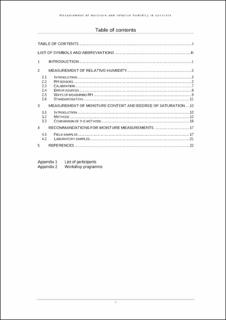| dc.description.abstract | SINTEF and NTNU organized a WORKSHOP on moisture in concrete, 6th-7th February 2012 in Trondheim. The workshop was related to and supported by the COIN Focus Areas 3.1 “Crack free concrete structures” and 3.2 “Service life”. The purpose of the workshop was to share information on
• available methods of measuring and modeling moisture in concrete and discuss pros and cons
• moisture induced volume changes.
The present report gives a brief overview over most of the methods presented and discussed at the workshop. A list of participants is given in Appendix 1; the programme is given in Appendix 2.
The moisture state of concrete may be characterized either by moisture content or by relative humidity (RH) exerted by the moisture. The two are related via the sorption isotherm (moisture content vs. RH), which is not a given relationship, but which for a given concrete depends on a large number of factors. The most important are degree of hydration, temperature history, moisture history (drying/wetting), carbonation and whether the present moisture state is one of adsorption or desorption.
The choice of RH or moisture content to characterize the moisture state in a given case depends on the purpose. For example, moisture content or degree of capillary saturation (as degree of filled pores) is obviously most relevant if the problem at hand is frost damage. For chemical reactivity of various kinds RH may be most relevant, since the RH, and not the amount, is a direct measure of the activity of the pore water.
The methods discussed are divided into two categories:
1. measuring the relative humidity (RH)
2. measuring the moisture content, and the degree of capillary, vacuum and pressure saturation (DCS, DVS and DPS)
Based on the discussions, literature and procedures earlier used at SINTEF and NTNU for measurement relative humidity, and measurement of moisture content and degree of saturation are proposed.
Table 2 and Table 5 provide an overview of respectively relative humidity sensors and methods for measurements of moisture content and degree of saturation. | en_US |
